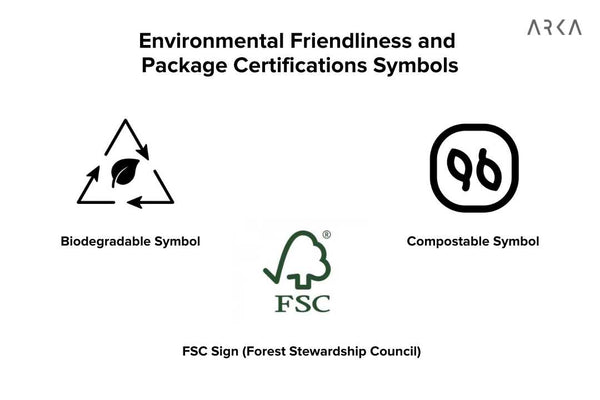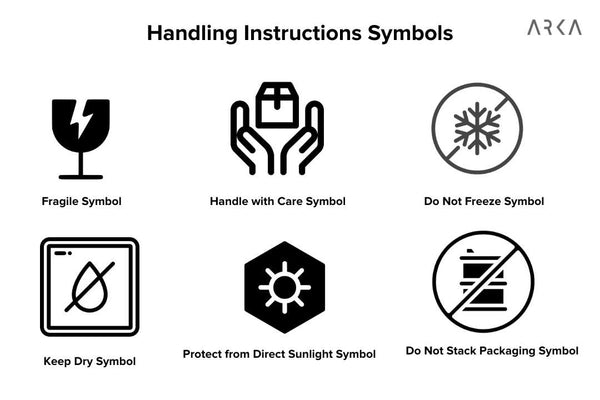Packaging 101: The Complete Guide
- Packaging 101
- Types of Packaging
- Aseptic Packaging
- Blister Packaging
- Biodegradable Packaging
- Bulk Packaging
- Carbon Neutral Packaging
- Circular Packaging
- Clamshell Packaging
- Compostable Packaging
- Cornstarch Packaging
- Corrugated Packaging
- Discreet Packaging
- Ecommerce Packaging
- Flexible Packaging
- Frustration Free Packaging
- Retail Packaging
- Secondary Packaging
- Smart Packaging
- Sustainable Packaging
- What is a PR Package?
- What is a Poly Mailer?
- Packaging Design Ideas
- AI Packaging Design
- Bakery Packaging Ideas
- Bath Bomb Packaging Ideas
- Bath Salt Packaging Ideas
- Body Butter Packaging Ideas
- Body Oil Packaging Ideas
- Body Scrub Packaging Ideas
- Brownie Packaging Ideas
- Cake Packaging Ideas
- Cake Pop Packaging Ideas
- Candle Packaging Ideas
- Candy Packaging Ideas
- Canva Packaging Design
- Chocolate Packaging Ideas
- Cinnamon Roll Packaging Ideas
- Clothing Packaging Ideas
- Coaster Packaging Ideas
- Coffee Bag Design Ideas
- Cookie Packaging Ideas
- Cosmetics Packaging Design
- Cotton Candy Packaging Ideas
- Cupcake Packaging Ideas
- DIY Packaging Ideas
- Dog Treat Packaging Ideas
- Food Packaging Ideas
- Empanada Packaging Ideas
- Etsy Packaging Ideas
- French Fries Packaging Ideas
- Frozen Food Packaging Ideas
- Hair Extension Packaging Ideas
- Handbag Packaging Ideas
- Jewelry Packaging Ideas
- Keychain Packaging Ideas
- Lash Packaging Ideas
- Lip Gloss Packaging Ideas
- Macaron Packaging Ideas
- Minimalist Packaging Ideas
- Mug Packaging Ideas
- New Employee Welcome Kit Ideas
- Packaging Colors
- Packaging Inserts Ideas
- Packaging Logo Design
- Packaging Typography
- Perfume Box Design Ideas
- Pizza Box Design Ideas
- Popcorn Packaging Ideas
- Scarf Packaging Ideas
- Skincare Packaging Design Ideas
- Soap Packaging Ideas
- Sock Packaging Ideas
- Sticker Packaging Ideas
- Sunglass Packaging Ideas
- Sustainable Packaging Ideas
- Tea Packaging Ideas
- Wax Melt Packaging Ideas
- Weed Packaging Ideas
- T-Shirt Packaging Ideas
- Wine Packaging Design Ideas
- What is a Packaging Engineer?
- Types of Packaging Materials
- Chipboard vs Cardboard
- Compostable Packaging Materials
- Alternatives to Plastic Packaging
- Edible Packaging Materials
- Food Packaging Materials
- Are Poly Mailers Recyclable?
- How to Recycle Cardboard Boxes
- How to Recycle Packaging Materials
- Medical Device Packaging Materials
- Mono Material Packaging
- Pharmaceutical Packaging Materials
- Plastic Food Packaging
- Protective Packaging Materials
- Reusing Packaging Materials
- Types of Packaging Foam
- Void Fill Packaging
- What is Chipboard?
- What is Kraft Paper?
- Offset vs Digital Printing
- RGB vs CMYK Printing
- Screen Printing vs Digital Printing
- Screen Printing vs Sublimation
- What is a Dieline in Packaging?
- What is Die Cutting?
- What is Digital Printing?
- What is Flexographic Printing?
- What is Glassine Paper?
- What is Offset Printing?
- What is Spot UV Printing?
- Why is 300 DPI Good for Printing?
- How to Estimate Shipping Costs
- How to Pack Glass for Shipping
- How to Mail a Bubble Mailer
- How to Make a Shipping Label
- How To Measure Box Dimensions and Sizes
- How to Ship Alcohol
- How to Ship Artwork
- How to Ship Books
- How to Ship a Cake
- How to Ship Candles
- How to Ship Clothes
- How to Ship Cookies
- How to Ship Food
- How to Ship a Laptop
- How to Ship a PC
- How to Ship Plants
- How to Ship Shoes
- How to Ship Vinyl Records
- Packaging Symbols
- Shipping Large Items
- What is a Delivery Exception?
- What is Shipping Insurance?

Discover Phillip Akhzar’s journey, the Founder and CEO of Arka, bringing 16 years of expertise in packaging and supply chain logistics. Read more on Arka.
Importance and Purpose of Packaging Symbols
In the fast-paced world of consumer goods, where products travel from manufacturers to consumers, the role of symbols on packaging has become increasingly vital. These symbols are a universal language communicating crucial information about the product and its packaging.
Let's explore the significance and purpose of packaging symbols, shedding light on how they ensure product safety, compliance and contribute to environmental awareness and sustainability.
Product Safety Assurance and Compliance
• Ensuring clear communication: As silent communicators, packaging symbols relay essential details about usage, storage and possible hazards at bay. Ranging from 'fragile' to 'temperature requirements,' these symbols are as important regarding product ability as they are to the safety of consumers.
• Regulatory Compliance: In a world full of regulations, symbols in packaging let companies meet all the industry standards and legal requirements. For allergen warnings, recycling instructions, or safety precautions, these simply become a picture guide to all the compliance needs.
Environmental Awareness and Sustainability
• Recycling Guidelines: As the world moves towards sustainability, the packaging symbols highlight consumer recycling behavior. With recycling symbols guiding if all the packaging is recyclable, this also directed consumer behavior and contributed towards a greater environmental goal.
• Material Identification: These symbols will also help the consumers believe the substance that has been used in packaging so that an informed choice can be made by them. The trend in using eco-friendly and sustainable packaging alternatives has picked up recently because the end consumer is becoming conscious, thereby increasing transparency commensurate with such interest.
Challenges Faced During Adoption of Packaging Symbols
While packaging symbols play a pivotal role, their implementation is challenging.
• Misinterpretation Issues and Global Diversities: Some challenges include using the same symbols to mean different things across cultures, which could easily lead to confusion or misuse. Cultural diversity should be considered while developing packaging symbols for a global audience to avoid misinterpretation.
• Overuse and dilution of symbols. With the increase in the need to convey information, the associated risk is that packaging may run overboard with symbols. Such an overload might reduce the potency and efficacy of individual symbols, making it difficult for consumers to decalcify which information is more vital than others.
• Cultural Considerations: Some symbols may hold cultural or religious meanings that, unknowingly, might be offensive for some, maybe causing discomfort without meaning. Corporates have a foot on such cultural egos and toes of religions and cautiously walk thereon in such a manner that the symbol on the packaging is universally not disputable.
35+ Common Shipping Symbols To Consider
When it comes to shipping and handling packages, understanding packaging symbols meanings is crucial. These shipping symbols convey important information about recyclability, material identification, product safety, environmental friendliness and handling instructions. Let's delve into the diverse world of symbols on packaging to ensure you're well-versed in the language of logistics.
Recyclability Packaging Symbols
Packaging symbols related to recyclability provide insight into the material's environmental impact. Familiarize yourself with these common symbols:
• Recycling Symbol (Mobius Loop): Indicates that the product is recyclable.
• Recycled Content Symbol: Highlights the use of recycled materials in the packaging.
• Recyclable Glass Symbol: This signifies that the glass component is recyclable.
• Recyclable Paper Symbol: Denotes recyclable paper materials.
• Green Dot Packaging Symbol: Indicates that the producer contributes to recycling efforts.
• Tidyman Symbol: Encourages proper disposal and litter prevention.

Material Identification and Plastic Recycling Symbols
Understanding the materials used in packaging is essential. Decode these material identification and plastic recycling symbols:
• Resin Identification Code (RIC): A number inside the chasing arrows symbol identifies the type of plastic.
• PP (Polypropylene): Signifies the use of polypropylene plastic.
• LDPE (Low-Density Polyethylene): Indicates low-density polyethylene plastic.
• PVC (Vinyl or Polyvinyl Chloride): Denotes the use of polyvinyl chloride plastic.
• Recycling HDPE: Highlights the recyclability of high-density polyethylene.
• Recycling PET or PETE: Signifies the recyclability of polyethylene terephthalate.

Product Safety Shipping Symbols
Ensure the safety of shipped products by recognizing these essential symbols:
• Food Safe: Indicates that the packaging is suitable for food items.
• CE Mark: Demonstrates conformity to European safety standards.

Environmental Friendliness and Package Certifications Symbols
Promote sustainability with these symbols conveying environmental considerations:
• Biodegradable Symbol: Signifies that the packaging can naturally decompose.
• Compostable Symbol: Indicates that the material is suitable for composting.
• FSC Sign (Forest Stewardship Council): Certifies that the packaging material comes from responsibly managed forests.

Handling Instructions Symbols
Proper handling prevents damage during transit. Decode these symbols for effective care:
• Fragile Symbol: Highlights delicate or breakable items.
• Handle with Care Symbol: Emphasizes gentle handling.
• Do Not Freeze Symbol: Warns against exposing the package to freezing temperatures.
• Keep Dry Symbol: Indicates sensitivity to moisture.
• Protect from Direct Sunlight Symbol: Recommends shielding from sunlight.
• Do Not Stack Packaging Symbol: Advises against stacking.
• Maximum Stacking Height Symbol: Specifies the maximum stack height.
• Do Not Hook Shipping Symbol: Warns against using hooks.
• Do Not Lift Packaging Symbol: Advises against lifting the package.
• Do Not Open with Sharp Objects Symbol: Warns against using sharp objects.
• Child Resistant Packaging Symbol: Designed to deter children from opening.
• Tamper Evident Seal Symbol: Ensures the package hasn't been tampered with.
• Temperature Warning Symbol: Highlights temperature-sensitive contents.


Special Handling and Transportation Instructions Symbols
For specialized handling and transportation, pay attention to these symbols:
• Two-Person Lifting Symbol: Indicates that two people should lift the package.
• Trolley Lifting Symbol: Recommends the use of a trolley for transportation.
• Do not Place Near Magnets: Warns against proximity to magnetic fields.
• Center of Gravity: Advises finding the package's center of gravity.
• Package Weight: Indicates the package's weight.

Legal Requirements and Standards for Packaging Symbols
In the vast world of trade, communication transcends spoken words and finds expression in pack symbols. As businesses stretch their influence globally, the knowledge of legal requirements and standards for these symbols becomes vital. Packaging symbols, often known as a universal language, serve as a conduit connecting consumers, regulators, and businesses.
International Standards: The shaping of packaging symbols owes much to international standards. Entities like the International Organization for Standardization (ISO) offer directives, ensuring consistency and clarity in symbol usage across borders. These standards, crucial for seamless trade, go beyond language barriers, fostering confidence among consumers.
Regional Regulations: While international standards provide a broad framework, regional regulations inject specific nuances into packaging symbols. Different countries impose distinct requirements, necessitating symbols communicating vital information regarding product safety, handling, and disposal. Adapting packaging symbols to align with these regional regulations is essential for businesses, ensuring they meet the expectations of local authorities and consumers.
Compliance Importance for Businesses: Compliance with packaging symbols goes beyond aesthetics—it's a legal and business necessity. Failure to adhere to prescribed symbols can lead to regulatory penalties, harm reputation, and even restrict product entry in certain markets. Businesses emphasizing compliance showcase dedication to consumer safety and environmental responsibility, building trust and loyalty.
Final Thoughts
Packaging symbols are like a secret code on every package, quietly telling us about safety, eco-friendliness and following the rules; when we understand this code as consumers, we can choose products that match our values. In the complex world of packaging symbols, each icon adds to the story of how safe, sustainable and globally connected a product is.
So, the next time you open a package, take a moment to notice the symbols – they speak a language beyond words, linking us to a world of info and choices. Packaging symbols are the quiet storytellers in how companies talk to consumers.
Arka simplifies and enhances companies' packaging needs through innovative solutions, ensuring efficient, eco-friendly, and visually appealing packaging strategies. Let’s create your brand’s premium custom shipping boxes and mailer boxes today!
